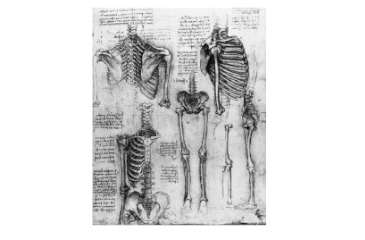The Bare Bone Facts
When an engineer builds a building, a bridge or some other structure, he must build it so that it can withstand both stretching and compressing forces. In designing the structure to withstand both kinds of these forces, he must anticipate how much of each force the structure might face in its lifetime.

Some materials, like cast iron and concrete, are very good at withstanding compression forces but very poor in handling stretching forces. Using one of these materials to build a structure that undergoes tensile or stretching forces could lead to disaster.
Now let’s apply our basic engineering information to the problem of building a frame or skeleton for a living creature. Although you may weigh only 130 pounds, your long leg bone will very likely have to be prepared to deal with more than 1,000 pounds of compression and hundreds of pounds of tension from the muscles that are anchored to it. It’s a good thing, then, that normal bone is three times as strong as good solid wood and nearly as strong as iron! Tests have shown that the tensile strength of bone is 35,000 pounds per square inch, while iron is 40,000 pounds per square inch. But bone material is better than iron because it is three times lighter and much more flexible.
The structure of your bones is too carefully engineered to have been an accident. If life were the result of impersonal evolution, evolution would still be trying to engineer the best material for skeletons, and there would be an awful lot of jellyfish around!
Psalm 139:13-14
“For thou hast possessed my reins: thou hast covered me in my mother’s womb. I will praise thee; for I am fearfully [and] wonderfully made: marvellous [are] thy works; and [that] my soul knoweth right well.”
Prayer:
Father in heaven, help me to remember that You also care about the spiritual stresses in my life and that You are present to help me if I will but take my needs to You. Thank You for being there when I need You. Help me to need You always. In Jesus’ Name. Amen.
Photo: Study of Skeletons, c. 1510, by Leonardo da Vinci.
© 2024 Creation Moments. All rights reserved.